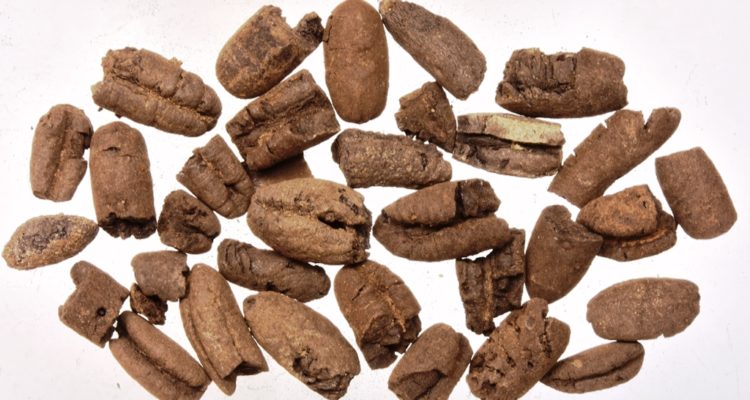“The findings reflect the beginnings of globalization processes in the ancient world,” said Prof. Bar-Oz from the University of Haifa.
By TPS
Spices were not the only commodity traded over the ancient “Incense Route” that linked the Arabian Peninsula and the Red Sea to the Mediterranean Sea and ran through the Land of Israel.
Archaeological research at the University of Haifa has recently focused on the commodities in transit.
It has targeted “rubbish middens” – old dumps for domestic waste that contained animal bones, human excrement, botanical material, mollusk shells, potsherds, and other artifacts and environmental and cultural indicators intentionally or unintentionally modified by human activities connected with past human occupation.
Red Sea fish, Nile oysters and exquisite bowls from Petra, the capital of the Nabataeans located today in Jordan, were part of the ancient Incense Road trade, according to the new archaeological study.
The new study was conducted by Prof. Guy Bar-Oz, Ph.D. student Roy Galili from Ben Gurion University, Prof. Gideon Avni, Dr. Tali Erickson-Gini, and Dr. Yotam Tepper from the Israel Antiquities Authority, Dr. Daniel Fox from Cambridge University and research student Nofar Shamir of the University of Haifa.
“When examining the composition of trade, three main trends can be identified – intercontinental trade with a central axis to Southeast Asia; international trade that connected marine sources and especially between the Red Sea and the Mediterranean; and local trade, which formed the ‘economic belt’ of the road and supplied the raw materials, as well as food for travelers on the road,” explained Prof. Bar-Oz from the School of Archaeology and Marine Cultures at the University of Haifa, who heads the research group digging in the ancient garbage that has accumulated at various stops along the way.
Uncovering spices
The Incense Route, which flourished between the third century BCE and the second century CE, with activity peaking during the Nabataean and Roman periods, was famous mainly for the spices and perfumes transported through it from Southeast Asia, through the Arabian deserts to the Mediterranean ports. A main artery of the road passed through the Land of Israel from Petra via the Ramon Crater and the Negev Hills to the port in Gaza.
Historical evidence documents the demand for luxury products brought from the East that included frankincense and myrrh and various spices, including cinnamon, black pepper, vanilla, cumin, turmeric and ginger.
In recent years, remains of these materials have been discovered at archaeological sites, including those in Israel.
Chemical analysis of jars at Tel Dor, located on Israel’s Mediterranean coast next to Haifa, revealed remnants of cinnamon. Similarly in Jerusalem, jars contained remnants of vanilla. More recently, turmeric was discovered in the teeth of a man buried in Megiddo in the Jezreel Valley in northern Israel.
The researchers in the current study focused on locating the raw materials that passed along the route.
For that, they dug up piles of garbage that had accumulated in the three main stations in the Negev – at Othan Mor (Moa) stopover, Sha’ar Ramon (Khan Saharonim), which served as hostels for the merchants’ caravans, and on the side of caverns that served as guard posts to protect the road.
Crossroads of East and West
“Inside the rubbish dumps, we hoped to find the food scraps and utensils used to prepare the food. Among other things, we wanted to use the variety of raw materials discovered to determine in which direction the trading caravans traveled. Did the merchant convoys carry goods only from east to west or did trade flourish in the opposite direction and the caravans returned laden on the way back as well? These are questions about which we had very little knowledge,” said Prof. Bar-Oz.
The researchers found fish bones and several types of seafood, including remnants of edible oysters from the Nile, and several remnants, some from the Mediterranean and the Red Sea.
Claws of freshwater crabs were also discovered in the garbage, as well as a variety of seeds of fruits, grains and legumes. A large number of olive and date seeds reflect the importance of agricultural products in the economy.
The archaeologists also found fragments of luxury Nabataean pottery and glass.
They discovered evidence of a local economy that supported the trading caravans. Bones from sheep, pigs, and game meat, chicken eggshells and plenty of plant foods were found in the excavations themselves.
According to Bar-Oz, these are probably the evidence of food that awaited the people in the convoy in those khans in the desert.
“The findings reflect the beginnings of globalization processes in the ancient world and the special importance of the Middle East and the desert expanses in particular, at the crossroads of East and West,” the researchers concluded.





